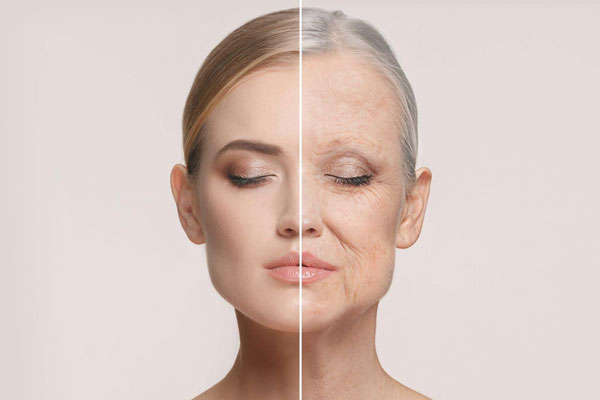They say the eyes are the mirror of the soul. But then the face - our emotional states.
[Ekman P., 1999].
At the heart of the internal aging of the skin is the process of slowing down cell division, which leads to the development of dystrophic processes and qualitative changes in organs and tissues. With age, dystrophic processes in the body are more pronounced:
the thickness of the stratum corneum in the epidermis increases, as a result, the complexion worsens and the skin acquires a dull grayish shade;
a decrease in the thickness of the germ layer in the skin leads to a more intensive evaporation of water;
changes occur in the vessels of the superficial and deep circulatory networks - some of the vessels narrow, which disrupts the blood supply, which leads to a decrease in the oxygen content of the skin;
the other part of the vessels, on the contrary, expands, which leads to the release of plasma elements into the surrounding space - as a result, the lymph flow is disturbed, edema occurs, and oxygen starvation worsens. The first visual signs are pastiness in the morning, swelling of the eyelids;
degenerative phenomena occur in the leather's elastic and collagen fibers. The collagen ceases to be the backbone of the leather, wrinkle, sag. The result is a reduction in the skin's turgor and its elasticity. The skin becomes sluggish, wrinkles appear.
But all the processes described above do not fall on the skin immediately: there is a so-called physiological cumulation - a gradual accumulation of the effect. If you take measures in time, you can slow down the aging process of the skin on the face and the entire human body as a whole. The information-biological effectiveness of the interaction between a person's body and consciousness is determined by the state of his emotional sphere.
Each emotion has a certain psychological code and a characteristic brain pattern, due to which it gets the opportunity to disrupt the biological life of the entire organism.
The experience of different emotions and corresponding muscle reactions in the vast majority of people is very universal. That is why a person can perceive and recognize the emotional state of other people, even without understanding their speech.
The genetic conditionality of the reactions of the facial muscles expressing emotional experiences is confirmed by the early maturation of their motor complexes.
All the facial muscles needed to express emotions are formed in the fetus on the 15th-18th
life week. And by the 20th week, mimic reactions can be observed in the embryo. When the child is born, the mechanism of facial expression is already fully formed and can be used in communication.
The innate nature of facial expression is also indicated by its similarity in blind and sighted infants. Only with the age of a blind child does the reactivity of the facial muscles disappear.
A person's face and even its schematic representation is a significant stimulus for a newborn. This can be judged by the duration of its fixation with the eyes, by the frequency of attention
on it, by the appearance of the vegetative component of the orientation reflex.
The child prefers to look at a human face over some other stimulus (a chessboard, a picture of different animals).
The American psychologist P. Ekman owns a neurocultural theory that takes into account both the innate nature of facial expression and the influence of cultural and national traditions on the expression and recognition of emotions [Ekman P., 1993].
The model assumes that the expressive manifestations of the six basic (basic) emotions - happiness, anger, sadness, surprise, disgust and fear - are universal and do not depend on culture. Even under conditions that make observation difficult, for example at a great distance, the universality of the emotion recognition mechanism is manifested.
All people use their facial muscles in the same way when experiencing these basic emotions. Each of them is associated with a specific program of movements of the facial muscles fixed in the genetic memory. In humans, get expressive facial reactions
independent value in the transmission of emotional signals. In social behavior, the interaction between individuals plays a huge role.
SOURCE:
"Psychocosmetology. Theory and practice". Lisetsky K.S.
LISETSKY K.S.
doctor of psychology, candidate of educational sciences, professor.
Dean of the Faculty of Psychology, Head of the Department of Developmental Psychology at the Social and Humanitarian Institute of Samara State University. Head of System Consulting Center.










